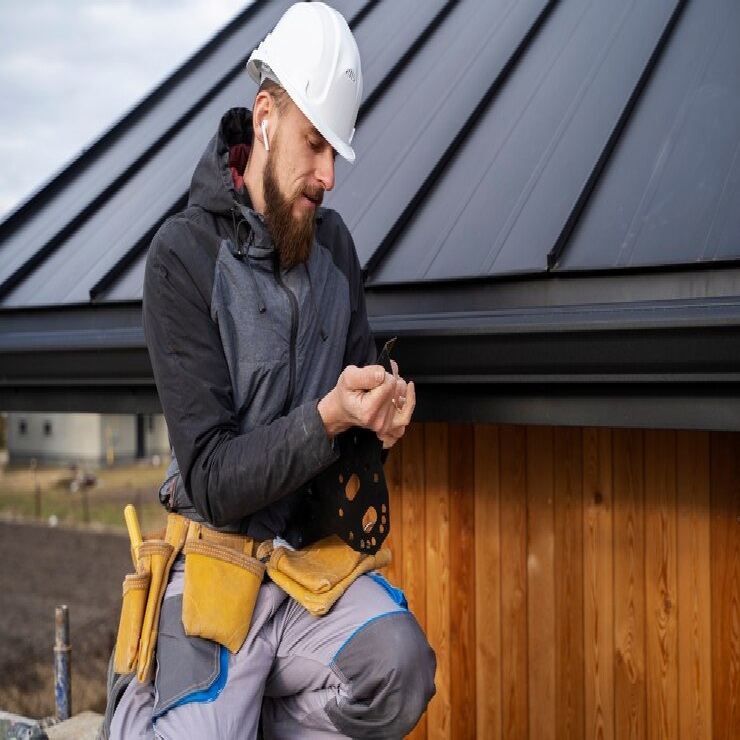
+1 234 567 8910

A Comprehensive Guide to Repairing a Leaky Roof
A leaky roof is one of the most troublesome issues a homeowner can face. Not only does it compromise the integrity of the structure, but it can also lead to costly damage and inconvenience. Addressing a leaky roof promptly is essential to prevent further deterioration and protect your home. In this comprehensive guide, we'll delve into the various aspects of repairing a leaky roof, from identifying the source of the leak to implementing effective solutions.
Identifying the Source of the Leak
The first step in repairing a leaky roof is identifying the source of the problem. While water stains on the ceiling are a telltale sign of a leak, tracing the exact origin can be challenging. Leaks can occur due to various reasons, including damaged shingles, deteriorated flashing, or clogged gutters. Conducting a thorough inspection of the roof and attic is crucial to pinpointing the source of the leak accurately.
Assessing the Damage
Once you've identified the source of the leak, it's essential to assess the extent of the damage. Inspect the affected area carefully for signs of water damage, such as rotting wood, mold growth, or water stains. Additionally, check the surrounding areas to ensure that the leak hasn't spread to other parts of the roof. Understanding the severity of the damage will help you determine the repair leaky roof most appropriate course of action for repairs.
Repairing Damaged Shingles
Damaged or missing shingles are a common cause of roof leaks. If you notice any cracked, curled, or missing shingles during your inspection, it's crucial to replace them promptly. Start by removing the damaged shingles using a pry bar or shingle removal tool. Carefully lift the surrounding shingles and slide the new shingle into place, securing it with roofing nails. Be sure to seal the edges of the new shingle with roofing cement to prevent water infiltration.
Replacing Damaged Flashing
Flashing plays a critical role in preventing water from seeping into vulnerable areas of the roof, such as valleys, chimneys, and skylights. Over time, flashing can become corroded, loose, or damaged, leading to leaks. Inspect the flashing around these areas for signs of wear and tear, such as rust or gaps. If you notice any damage, carefully remove the old flashing and replace it with new flashing material. Seal the edges of the flashing with roofing cement to ensure a watertight seal.
Clearing Clogged Gutters
Clogged gutters can exacerbate roof leaks by preventing proper drainage of rainwater. Leaves, debris, and other debris can accumulate in the gutters over time, causing water to overflow and seep under the roofline. Regularly cleaning and maintaining your gutters is essential to prevent clogs and ensure proper water flow. Use a ladder and gloves to remove any debris from the gutters and downspouts, and consider installing gutter guards to prevent future clogs.
Sealing Roof Penetrations
Roof penetrations, such as vents, pipes, and chimneys, are common entry points for water leaks. Over time, the seals around these penetrations can deteriorate, allowing water to infiltrate the roof. Inspect the seals around roof penetrations for signs of cracking or deterioration, and reseal them as needed with roofing caulk or sealant. Ensure that the seals are watertight to prevent future leaks.
Repairing Roof Valley Leaks
Roof valleys, where two sloping roof planes intersect, are particularly prone to leaks due to the concentration of water flow. If you notice signs of water damage or staining in the roof valley, it's essential to address the issue promptly. Start by removing any debris or obstructions from the valley, then carefully inspect the area for damaged shingles or flashing. Repair or replace any damaged components, and consider reinforcing the valley with additional flashing or roofing cement for added protection.
Applying a Roof Coating
Applying a protective roof coating can help extend the lifespan of your roof and prevent leaks. Roof coatings are typically applied as a liquid membrane that adheres to the surface of the roof, creating a seamless, waterproof barrier. Before applying the coating, thoroughly clean the roof surface to remove any dirt, debris, or loose material. Then, apply the coating evenly using a brush, roller, or sprayer, making sure to cover the entire roof surface. Allow the coating to dry thoroughly before exposing it to moisture.
Seeking Professional Help
While some roof repairs can be tackled as DIY projects, more extensive or complex issues may require professional intervention. If you're unsure about how to address a leaky roof or if the damage is extensive, it's best to consult with a qualified roofing contractor. A professional roofer can conduct a thorough inspection, recommend appropriate repairs, and ensure that the job is done safely and effectively.
Conclusion
Repairing a leaky roof is a crucial task that should not be overlooked. By identifying the source of the leak, assessing the damage, and implementing effective repairs, you can prevent further deterioration and protect your home from water damage. Whether you're replacing damaged shingles, repairing flashing, or sealing roof penetrations, addressing the issue promptly is key to maintaining a watertight roof. With the right tools, materials, and know-how, you can tackle roof repairs with confidence and ensure the long-term integrity of your home.